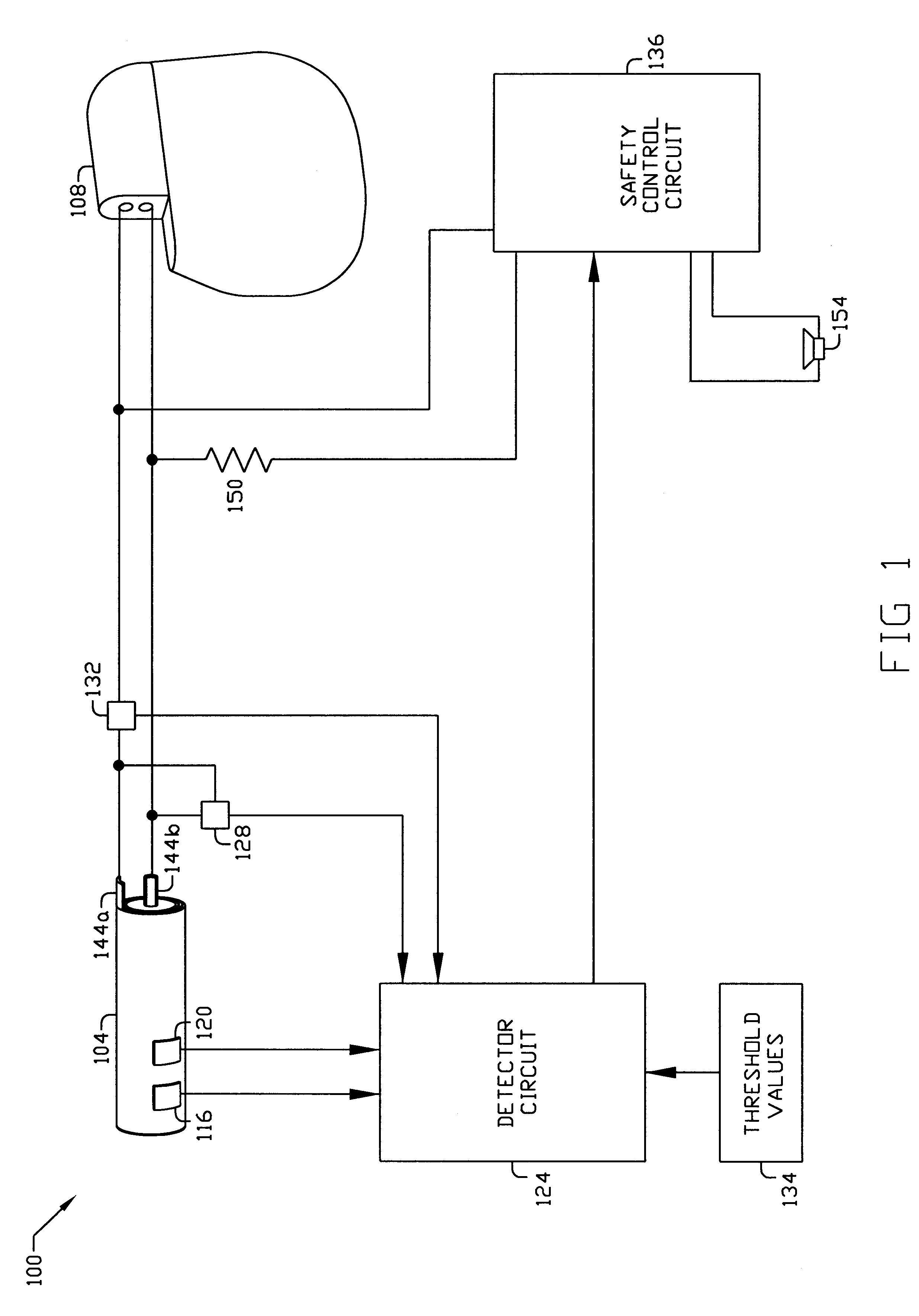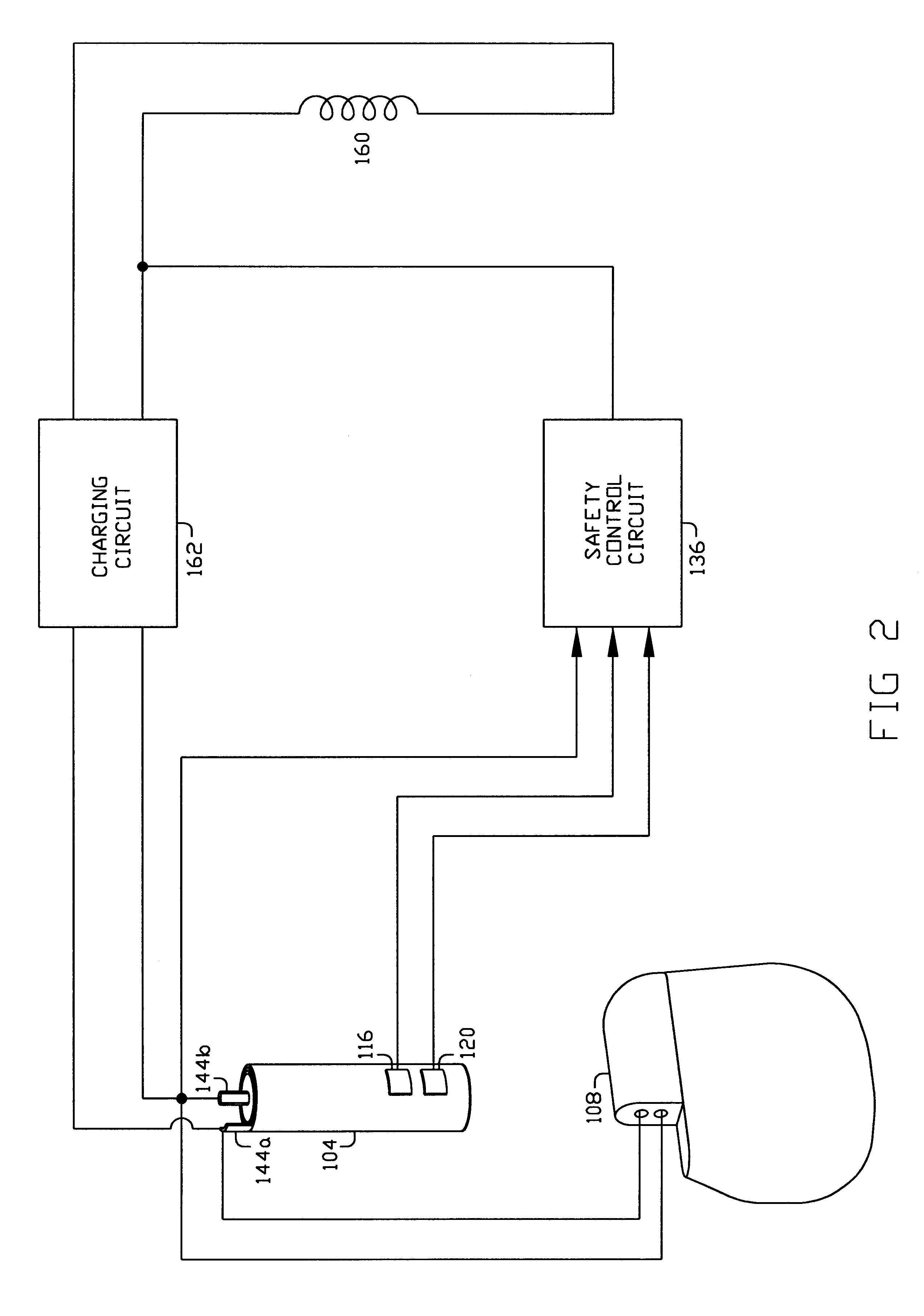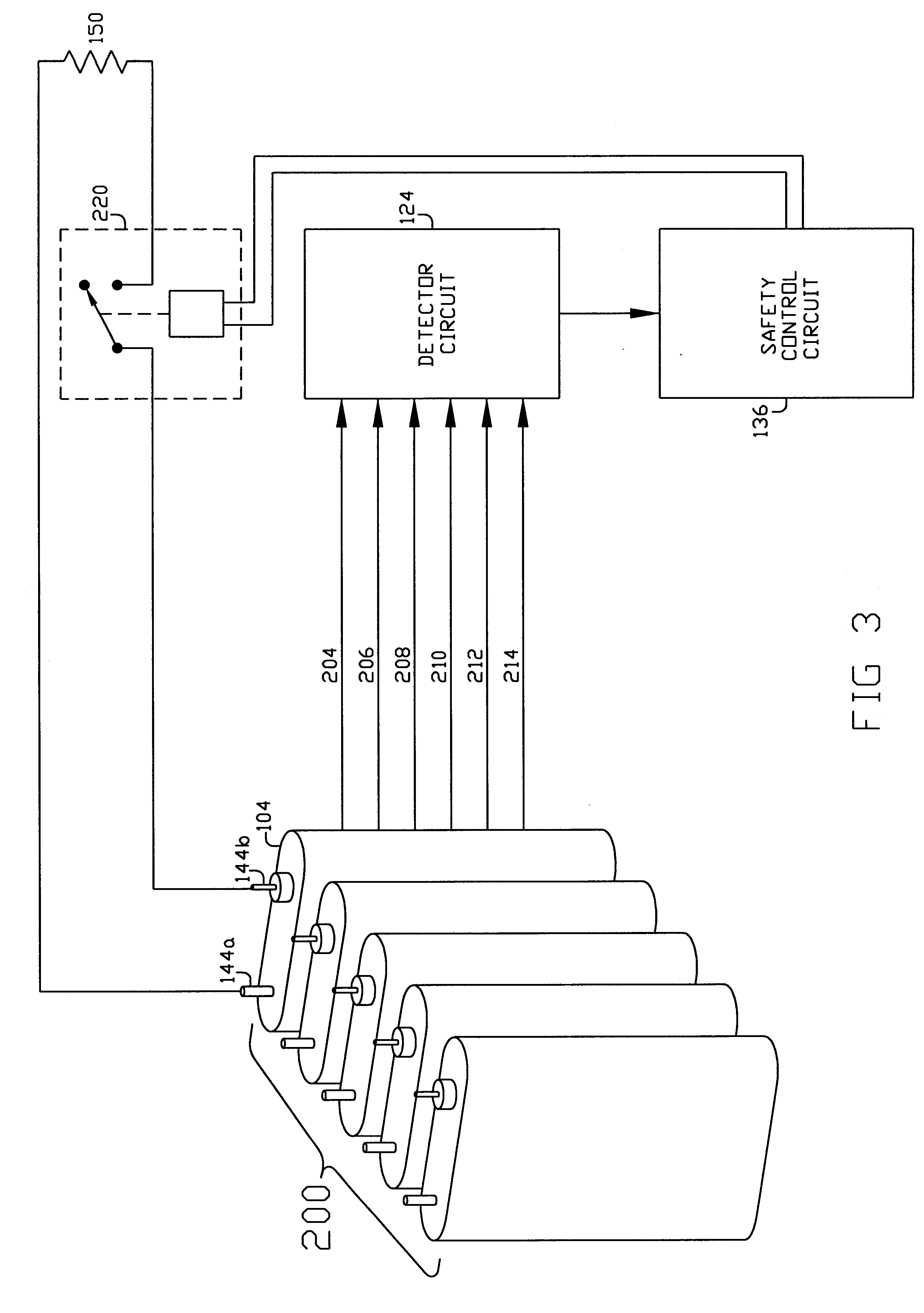Safety method, device and system for an energy storage device
a technology of energy storage device and safety method, applied in safety/protection circuit, primary cell maintenance/service, batteries, etc., can solve the problems of limiting charging and discharging, disconnecting batteries, and failing to mitigate overheating
- Summary
- Abstract
- Description
- Claims
- Application Information
AI Technical Summary
Benefits of technology
Problems solved by technology
Method used
Image
Examples
Embodiment Construction
Referring to the drawings, FIG. 1 is a schematic diagram illustrating the best mode of the claimed safety circuit 100 having a battery 104 powering an external device 108 (such as a spinal cord stimulator ). Sensors 116 and 120 detect temperature and pressure respectively, and are connected to a detector circuit 124 which also measures voltage 128 across and current 132 traveling through the battery 104. Predetermined threshold values 134 are stored in the memory of the detector circuit 124 and, in the event of an internal fault in the battery (e.g., over-heating of excessive pressure in, or high current flow through the battery), the detector circuit 124 signals the safety control circuit 136 to initiate an emergency energy discharge sequence including connection of the terminals 144a and 144b of the battery 104 to an energy discharge device 150. Simultaneously, the safety control circuit 136 initiates an alert signal device 154 to alert the operator or user that a failure has take...
PUM
| Property | Measurement | Unit |
|---|---|---|
| porosity | aaaaa | aaaaa |
| porosity | aaaaa | aaaaa |
| breaking time | aaaaa | aaaaa |
Abstract
Description
Claims
Application Information
 Login to View More
Login to View More - R&D
- Intellectual Property
- Life Sciences
- Materials
- Tech Scout
- Unparalleled Data Quality
- Higher Quality Content
- 60% Fewer Hallucinations
Browse by: Latest US Patents, China's latest patents, Technical Efficacy Thesaurus, Application Domain, Technology Topic, Popular Technical Reports.
© 2025 PatSnap. All rights reserved.Legal|Privacy policy|Modern Slavery Act Transparency Statement|Sitemap|About US| Contact US: help@patsnap.com



